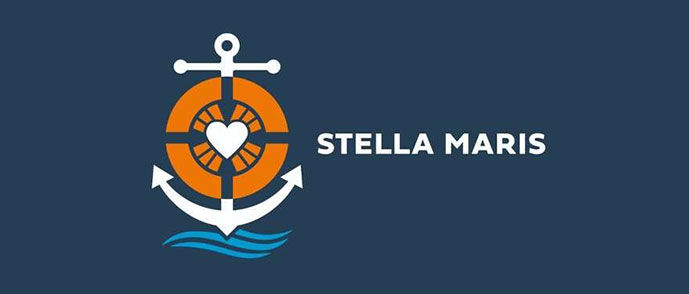On 4 October 1920, the Apostleship of the Sea was born, the Catholic organization serving seafarers, fishermen and their families all over the world. Here is the message of the Scalabrinian Superior General
Rome, October 1, 2020 – Exactly one hundred years ago, on 4 October 1920, the Apostleship of the Sea (or AOS, Apostolate of the Sea) was born, the Catholic organization serving seafarers, fishermen and their families around the world. A happy occasion for which the decision to change the name of the institution was communicated, which from now on will be called Stella Maris.
As announced last October for the opening of the centenary year, the anniversary was to be celebrated with an international conference in Glasgow, the Scottish city where a century ago a small group of people perfected the initiative of religious assistance to seafarers alongside the moral and social one (through visits to ships in ports, the distribution of Catholic literature and the establishment of places of recreation for Catholic seafarers).
Although on October 4th it will be possible to follow the Mass presided over in Glasgow by Archbishop Philip Tartaglia online, the series of planned celebrations have been canceled due to the pandemic. “But if the great celebratory event does not take place, the service that the chaplains render to the seafarers continues and indeed becomes more urgent,” said Fr. Leonir Chiarello.
Fr. Chiarello: “A Ministry at the Origins of the Congregation”
In his message for the centenary, the Scalabrinian Superior General recalled how this ministry of presence and assistance, reinvented during the pandemic thanks to the possibilities offered by modern media. This brings back to the origins of the Scalabrinian congregation when thousands of Italian migrants ventured to sea towards America. “Scalabrini responded to the problem above all by establishing the San Raffaele Society, which operated in that sector until 1923. And he was himself ‘chaplain on board’ during the two ocean crossings, first to the United States (1901) and then to Brazil (1904).”
Today, that 90% of what is purchased arrives by sea, there are about 1.6 million seafarers in the world, constantly working onboard about 70 thousand ships. “The life of the seafarer is protected by international conventions, but compliance with the rules is often unsatisfactory, especially for unskilled seafarers and fishermen – continues Fr. Chiarello – And in recent months, the world of seafarers has fallen due to the pandemic, creating big problems.”
Scalabrinian Missionaries Close to Seafarers
Fr. Bruno Ciceri, International Director of the organization, also confirmed this when Vatican News interviewed him: “With the pandemic, our way of providing pastoral assistance has changed. The chaplains were no longer able to go to the ships and had to use social media to conduct their ministry. (…) Our future will therefore be that of being always present in ports because they can be considered as the peripheries of the world, using a term very dear to Pope Francis.”
Alongside those who are subjected to lasting physical and mental stress on ships, there are those who are blocked onshore by restrictions and those who, unable to return home, find themselves in the limbo of the reception facilities. Even Scalabrinian: “From Buenos Aires to Montevideo, from Santos to Rio de Janeiro, from Ravenna to Cape Town, from Manila to Kaohsiung and Tokyo, the missionaries were close to the seafarers, and in some Centers, they hosted them for a long time – we still read in Fr. Chiarello’s message – On the occasion of this centenary, we feel close to them and to those they host and we ask to know how to use the opportunities offered to us to strengthen our service in the world of human mobility.”
A New Name, a New Logo
Starting with this event, the Apostleship of the Sea will be known only as Stella Maris. A change made necessary by the confusion and misunderstandings that the coexistence of multiple names had so far generated in the various countries in which the organization operates (fifty-five around the world).
As they spread, the new AOS centers established in the ports were called Stella Maris, the traditional name of the Virgin Mary, considered the guide that leads to Christ. This new name was selected because, Fr. Ciceri explained, being Latin does not need to be translated and thus assumes a greater potential, of global reach.
Also new is the logo that preserves all the original elements in an essential form, making it easily recognizable from ships regardless of weather and distance. “The logo has changed, but the anchor of hope has remained, the lifesaver of faith and the charity of the heart of Jesus – concludes Fr. Chiarello – Together with the Church, we must know how to renew our mission, remaining missionaries feared by the sad and invoked by the unhappy people who find themselves in distress. To Mary, Stella Maris, we entrust all seafarers, fishermen and their families, to lead them to the safe harbor of the Father’s love.


